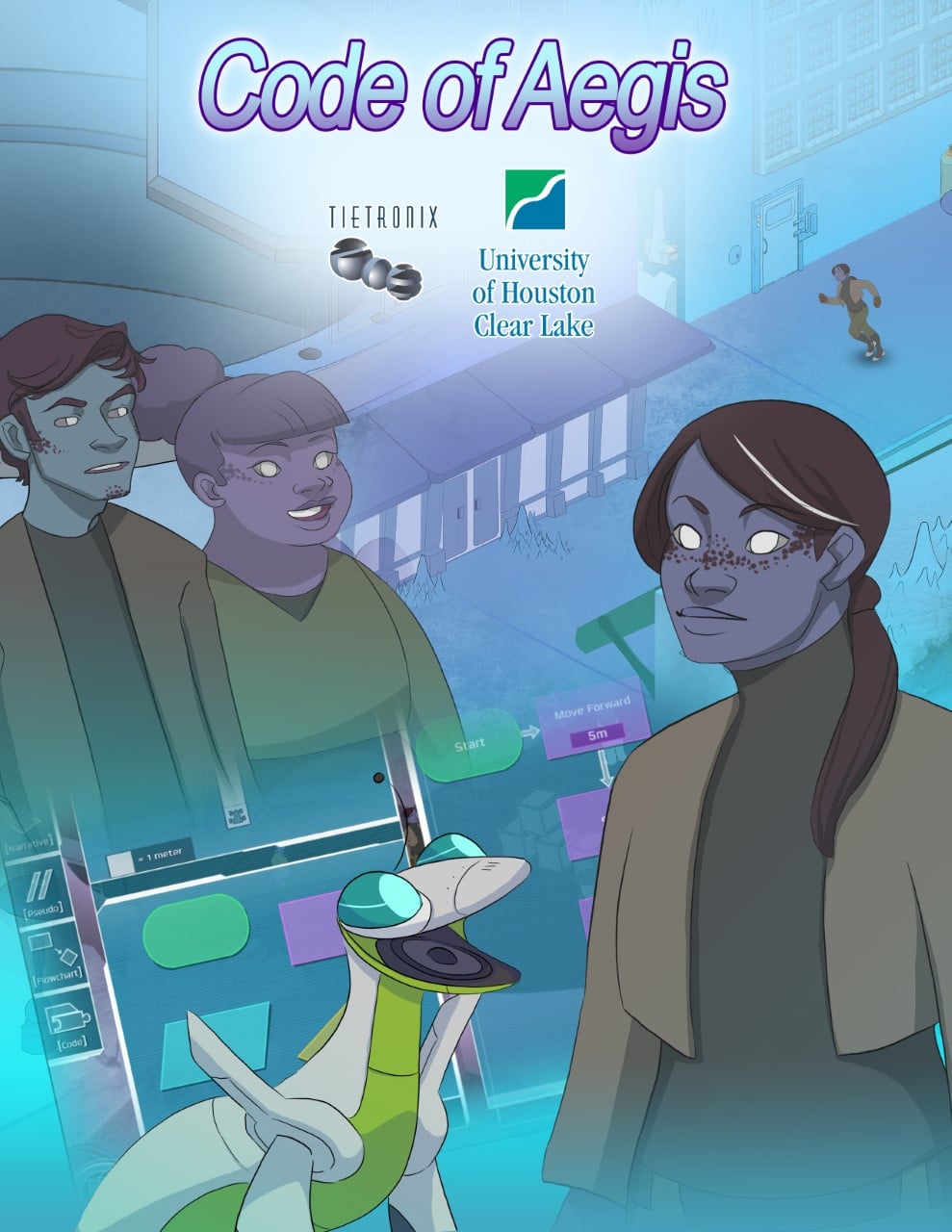Award Won!
Best Social Media Crowdsourcing Game
Award Won!
Students’ Choice Award (Available 2013-present)

Code of Aegis
University of Houston & Tietronix Software
Code of Aegis was developed for DARPA through the SBIR program. This STEM engagement game focuses on teaching computer science aptitude, critical thinking, and programming skills. By merging a graphic novel with an interactive game, students/players are scaffolded through the instruction and introduced to programming concepts and robotics programming knowledge. Usability testing during development, along with Formative and Summative testing in the classroom reinforced the learning effectiveness. The game is a multi-platform solution that is currently available for the 6–8th grade classroom.
